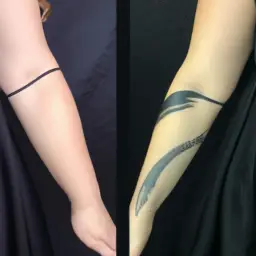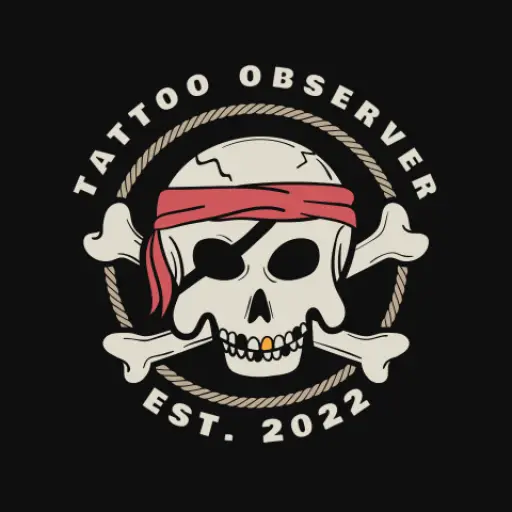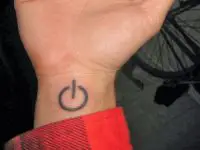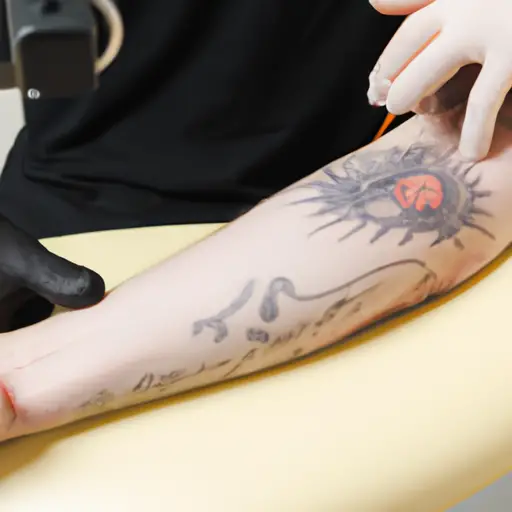 At one time or another, we’ve all made decisions that we later regret. The same can be true for tattoos. While a tattoo might have seemed like a good idea at the time, tastes, circumstances, and lifestyles can change. When that happens, you may start seeking tattoo removal options. However, lasers aren’t the only solution. This article explores alternative methods of tattoo removal that don’t involve lasers.
At one time or another, we’ve all made decisions that we later regret. The same can be true for tattoos. While a tattoo might have seemed like a good idea at the time, tastes, circumstances, and lifestyles can change. When that happens, you may start seeking tattoo removal options. However, lasers aren’t the only solution. This article explores alternative methods of tattoo removal that don’t involve lasers.
Surgical Excision
Surgical excision is a traditional and effective method of tattoo removal. As the name suggests, this method involves cutting out the tattooed skin and stitching the surrounding skin together. While this technique is quick and often successful after a single session, it’s best suited for smaller tattoos due to the potential for scarring and longer healing times.
Dermabrasion
Dermabrasion is another non-laser option for tattoo removal. This method involves using a high-speed rotary device to “sand” the skin’s surface, removing the tattooed skin layer by layer. Local anesthesia is typically used during the process. While this procedure can be effective, it may require multiple sessions, and there’s a risk of scarring and changes in skin color.
Salabrasion
Salabrasion is a technique similar to dermabrasion but incorporates the use of a salt solution to aid in the removal of the tattooed skin layers. The salt solution is applied to the tattooed area, and then the skin is abraded to remove the tattoo. Like dermabrasion, this method may require multiple sessions and may also lead to scarring and changes in skin color.
Tattoo Removal Creams
For those seeking a less invasive approach, tattoo removal creams offer a topical solution. These creams work by penetrating the skin and breaking down the tattoo ink, allowing your body to eliminate it. While this may sound like an attractive, painless option, it’s essential to note that results vary widely, and complete tattoo removal may not be possible. Moreover, some of these creams contain harsh chemicals that can cause skin irritation or allergic reactions.
Injections and Tattoo Removal Solutions
Some professionals offer tattoo removal solutions that are injected into the tattooed area. These solutions work by drawing the tattoo pigment to the skin’s surface, allowing it to scab and eventually peel off. While this method can be successful, it’s important to remember that multiple sessions may be required, and there’s a risk of skin irritation and infection.
Tattoo Cover-Up
If the thought of removing a tattoo is too daunting, you might want to consider a tattoo cover-up instead. This process involves working with a skilled tattoo artist to design a new tattoo that effectively covers the old one. This method offers a creative solution and is often less painful and costly than removal. However, it’s essential to find an experienced artist who can successfully camouflage the original tattoo.
While laser tattoo removal is widely recognized as one of the most effective tattoo removal methods, it’s not the only option. From surgical excision to tattoo cover-ups, there are several non-laser techniques available. However, it’s crucial to note that all methods have potential risks and may require multiple sessions to achieve the desired results. Always consult with a professional to understand the best method for your specific tattoo and skin type. Whether you choose removal or a cover-up, remember that the goal is to make you feel comfortable in your skin once more.























0 Comments